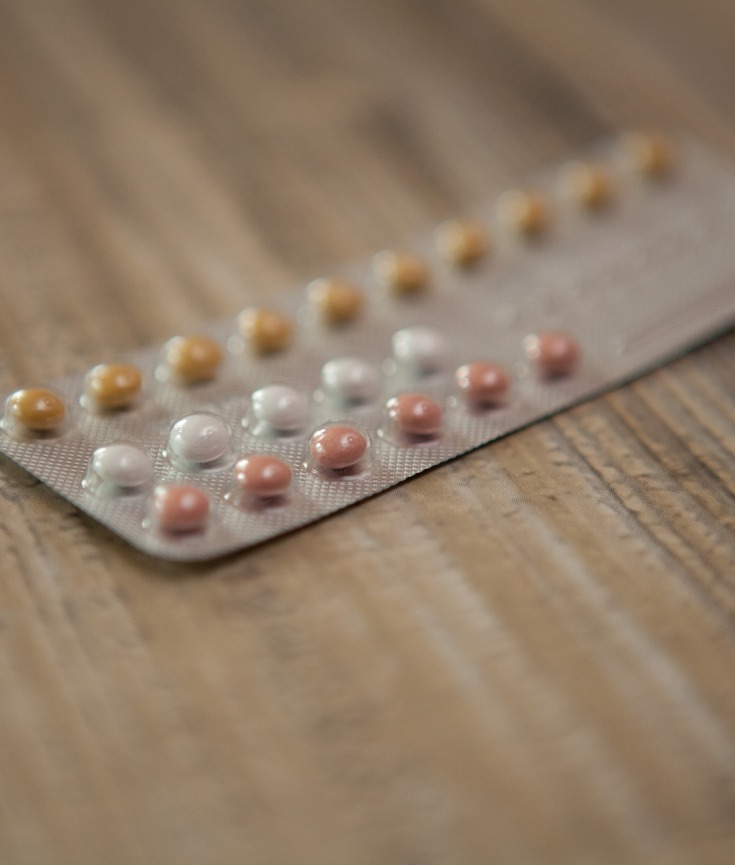By: Francesca Cocchiarale
Edited by: Bridget Salice
As someone who attended Catholic school up until college, I learned little to nothing about birth control and the importance of contraceptives when it comes to relationships. Sex education is absent in a majority of schools in the U.S., and this lack of knowledge can lead to harmful assumptions and negativity towards intimacy and protection. As for me, when my primary care physician prompted me to use birth control to regulate my period after experiencing amenorrhoea (an abnormal absence of menstruation), I felt extremely uneducated and skeptical when it was my turn to make this decision. Now, I am grateful for the opportunity to take birth control, since it has helped me stay in tune with my body and its natural processes. Since contraceptives can be a foreign subject to many people, it is important to be informed!
What exactly are contraceptives?
Pregnancy is when the joining of the male’s sperm and the female’s egg occurs. Though MANY factors have to line up in order to become pregnant, including optimal environmental conditions, the perfect timing of the female’s menstrual cycle, and the fertility of both the male and the female during the time of intercourse, it is still very common to become pregnant without the right protection. Contraceptives represent a tool that inhibits the ability of the sperm and egg to join in the first place, thus ending the prospect of pregnancy before it even begins.
Why do women start taking birth control?
One common myth about birth control is that women start using it ONLY to prevent pregnancy and because they are sexually active, but these are not the only reasons. For example, I started taking birth control because of the imbalance I was experiencing from amenorrhoea and hormonal problems that started to negatively affect both my mental and physical health. Here are other reasons women choose to take birth control:
- Heavy menstrual periods. Many women experience heavy menstrual cycles during their time of the month, and the physical effects can cause extreme amounts of pain that can be hard to handle during everyday tasks. Birth control can actually lessen the cramps, pain, and actual blood flow during the menstrual cycle for those who experience these symptoms.
- Amenorrhea (lack of periods). This is the main reason I started birth control, and I am very thankful for this change in my menstrual cycle. This disorder can arise from disordered eating and excessive exercising, since the body needs the right amount of nutrients and physical support to properly produce a menstrual cycle each month. Birth control can replace the lack of estrogen being released in the body, providing signals for the menstrual cycle and other important functions.
- Premenstrual syndrome (PMS). Some women experience PMS about 5-7 days before their period starts, where symptoms include: enlargement/sensitivity of breasts, mood changes/mood swings, constipation or diarrhea, fatigue, increased cravings or hunger, and cramping. Birth control can be taken to reduce symptoms and balance hormones within the menstrual cycle.
Different Types of Birth Control
There are a variety of birth control options and I want to give some examples for those interested in learning more! **Be advised: I am not a health professional or a certified doctor, so use this article as a starting point in learning the basics.
Hormonal Methods – This method uses the addition of hormones to regulate ovulation and the entirety of the menstrual cycle to prevent pregnancy and balance hormones. Here are some options:
- Injectable birth control. The birth control shot (known as Depo-Provera) prevents ovulation by injection of progestin approximately once every three months; this specifically prevents ovulation by preventing an egg to be present for fertilization, and it also thickens mucus found in the uterus, making it hard for sperm to travel. Though this only has to be administered 4 times a year, you have to make an appointment with a clinic or your doctor’s office for this shot.
- Combined oral contraceptives. The birth control pill is one of the most common uses of contraception. This contains synthetic estrogen and progestin, inhibiting ovulation. This pill has to be taken daily at around the same time of day to receive its full effect, and monthly packs can be requested through your primary care physician.
Long-Acting Reversible Contraception (LARC) – This form of birth control is the most effective, but does require slightly more complicated, but safe, medical procedures. Women can keep this type of birth control for 3-10 years without having to remember to take a pill or get a shot, which is why many choose this route.
- Hormonal IUD (intrauterine device). This plastic device, comes in four different forms (Mirena, Skyla, Liletta, and Kyleena), and is inserted into the uterus to release a synthetic form of progestin hormone, which thickens cervical mucus, making it nearly impossible to become pregnant. IUDs also help decrease the intensity of the menstrual cycle, making periods lighter. Though this is rare, reinsertion of the device might have to occur based on how the IUD fits and how the body reacts to its presence.
- Non-hormonal IUD. Like the hormonal IUD, it is inserted into the uterus, but the IUD is copper and plastic- based instead of just plastic. ParaGard, another name for this copper IUD, creates an internal environment that is very harmful to sperm concerning their ability to travel to the egg and function properly, which helps prevents pregnancy.
Barrier Methods – These methods do not involve the use of hormones, and most are only in-use during the act of intercourse to prevent the occurrence of sperm reaching the egg in the first place.
- Male condoms. Male condoms, which can be found at drug stores or grocery stores, are a thin barrier of latex or polyurethane that covers the penis and prevents the sperm from reaching the vagina. This can also reduce the risk of spreading sexually transmitted infections (STIs), but it does not completely prevent it.
- Diaphragms & Cervical Caps. Both of these methods use a form of spermicidal cream or jelly and require visitation to a health provider’s office. Diaphragms are made of soft latex or rubber and are inserted into the vagina before intercouse and are left in the vagina 6-8 hours after intercourse; cervical caps are more rigid and are made of silicone and serve the same purpose. Both can be used multiple times and should be replaced after a year or two.
Emergency Contraception
This form of contraception is used either right before or right after intercourse and allows those who currently don’t take a long-term form of birth control to prevent pregnancy. The most common form, and most available form, of emergency contraception is the morning-after pill (such as Plan B). The morning-after pill is optimal to take approximately 72 hours after intercourse but can be taken up to five days after for it to work under normal circumstances. This form of contraception stops ovulation in its tracks and causes the ovary to release the egg before impregnation can occur.
Where can you go to receive or qualify for birth control and advice?
Here are some places that will provide both general and descriptive information regarding birth control and why it is important:
- Your Primary Care Physician. Your PCP is a great person to talk to in detail about birth control options, since they know your medical history. They will be able to guide you towards specific types of birth control that best fit your physical and mental needs. Though some PCPs might specialize in women’s health, others may not; in this case, they will be able to send you to a trusted gynecologist/OBGYN that can assist in this decision.
- Planned Parenthood. Planned Parenthood is an organization that helps promote sexual health and awareness by providing medical assistance and sex education for teens, adults, parents, and educators. Some subjects that this organization focuses on are the following: sexual orientation, the importance of healthy relationships, abortion methods, birth control methods, pregnancy, and more. Check out plannedparenthood.org for more information.
Birth control, whether used to prevent pregnancy or treat symptoms, can be safe and effective with proper use and education. Personally, it has helped me focus more on my health as a woman and stay in-tune with my body’s signals. Don’t be afraid to reach out to a health professional, clinic, or other sources to find out more about birth control and the importance of contraceptives. Make this decision with a positive attitude and an open mind. And once you do find your birth control method, make sure follow instructions for full effectiveness in the end!

